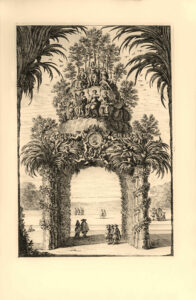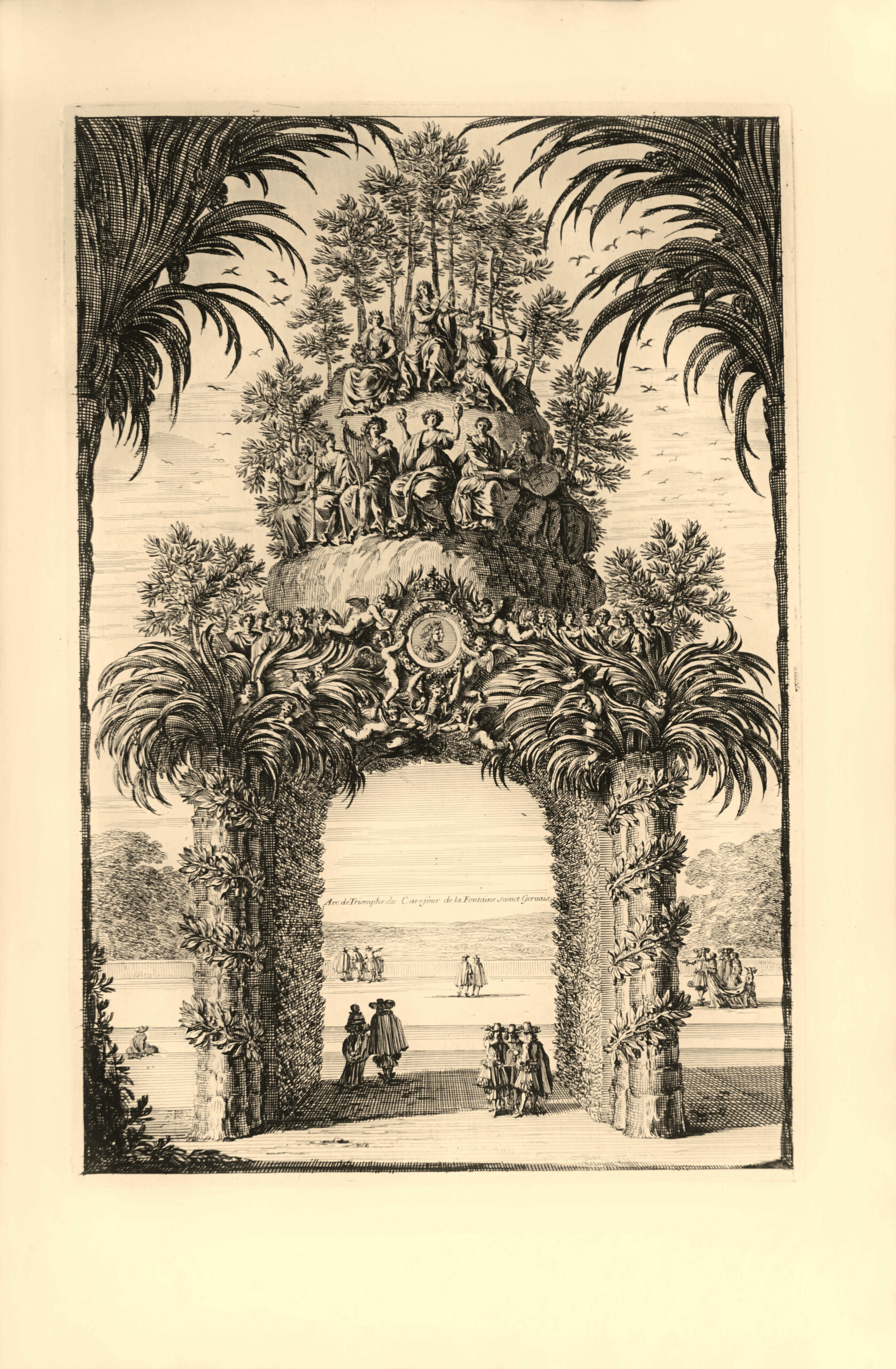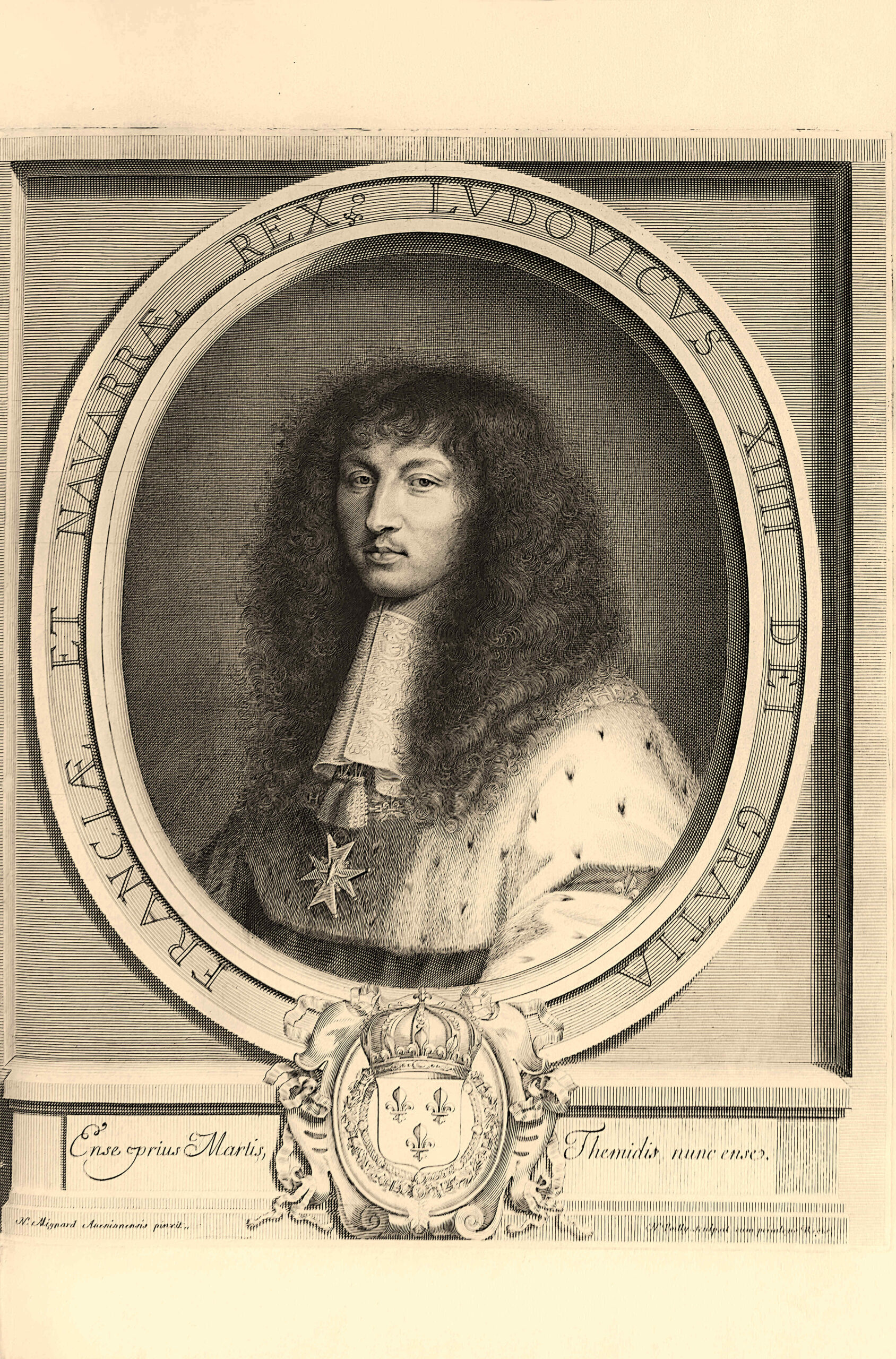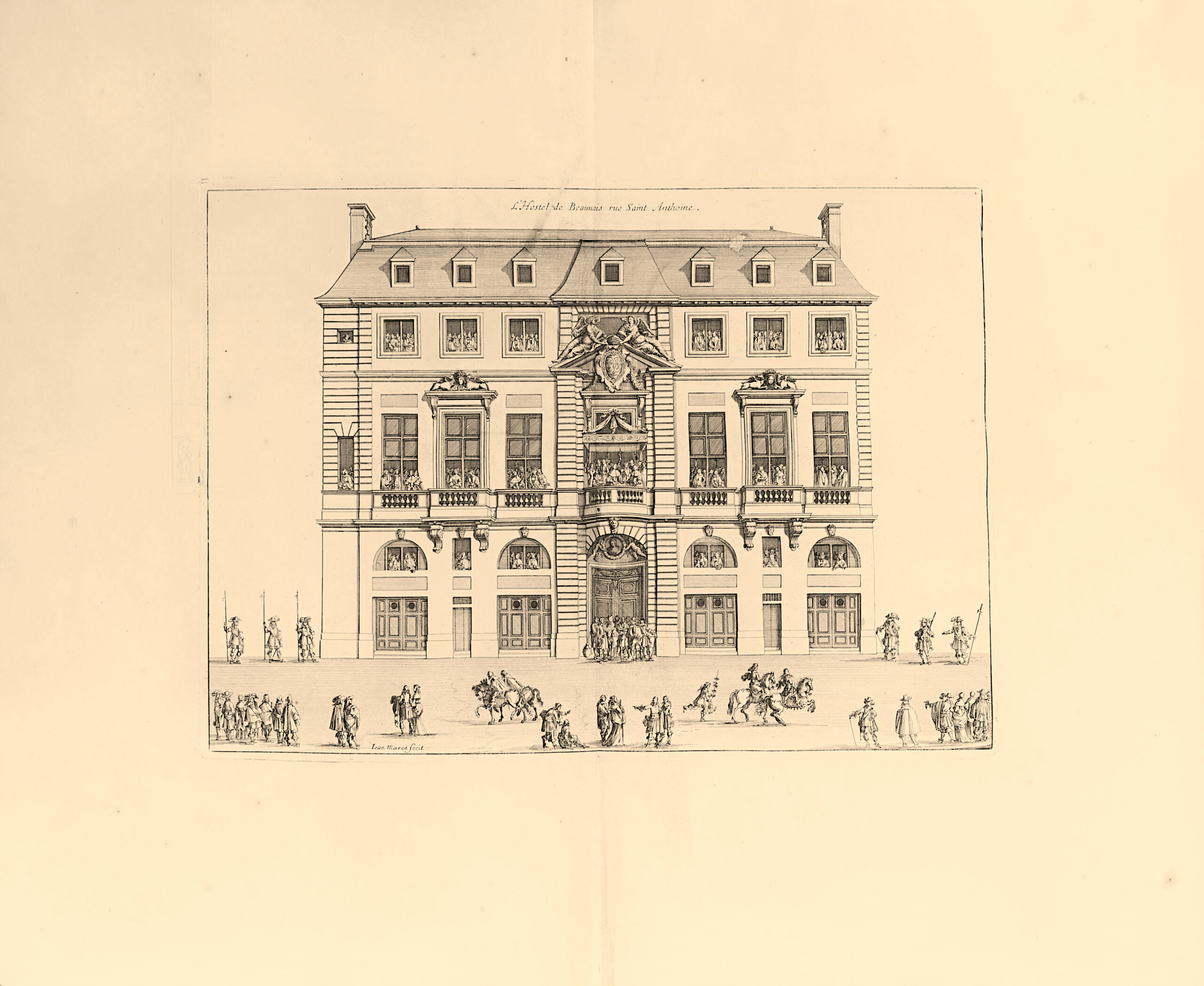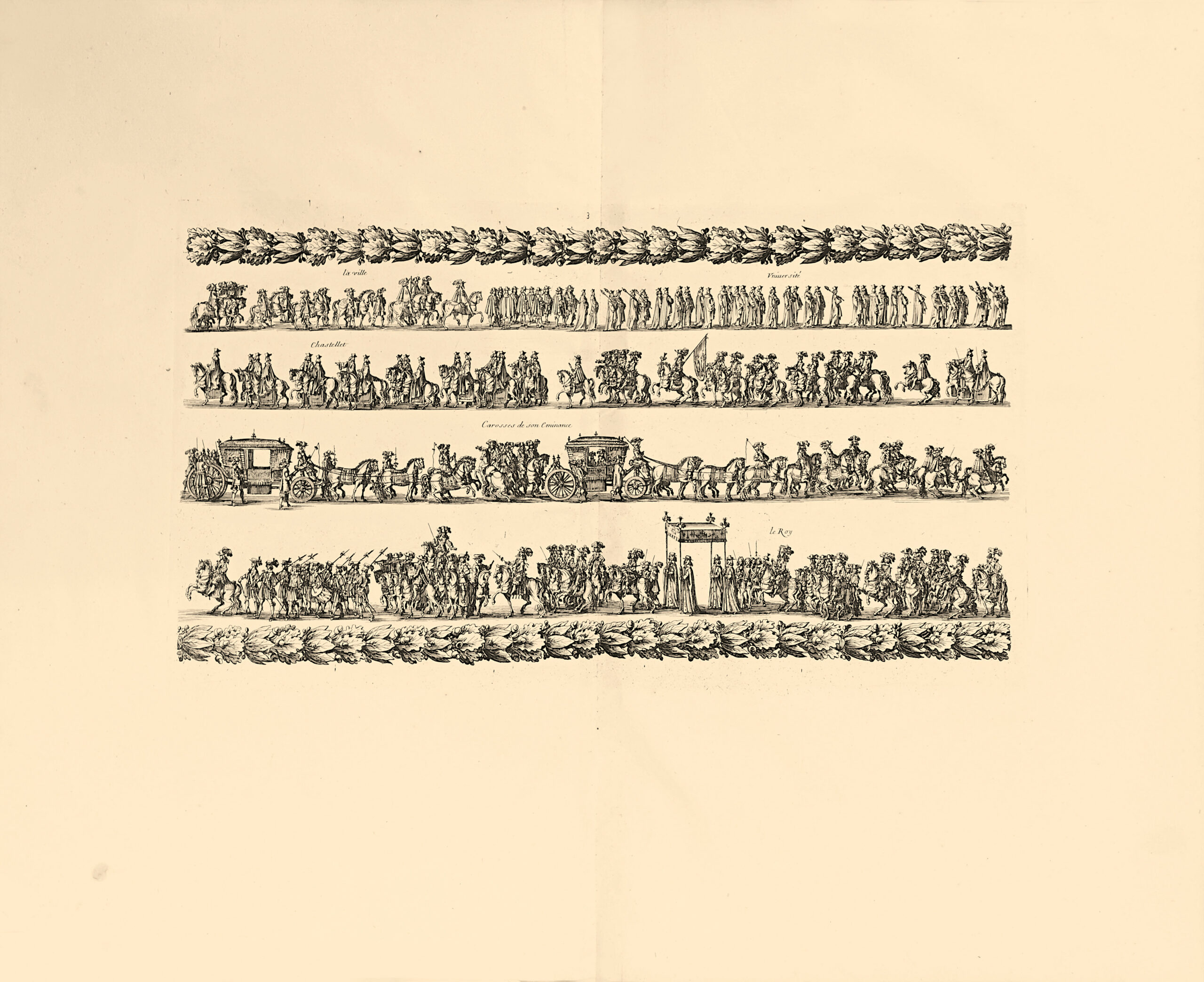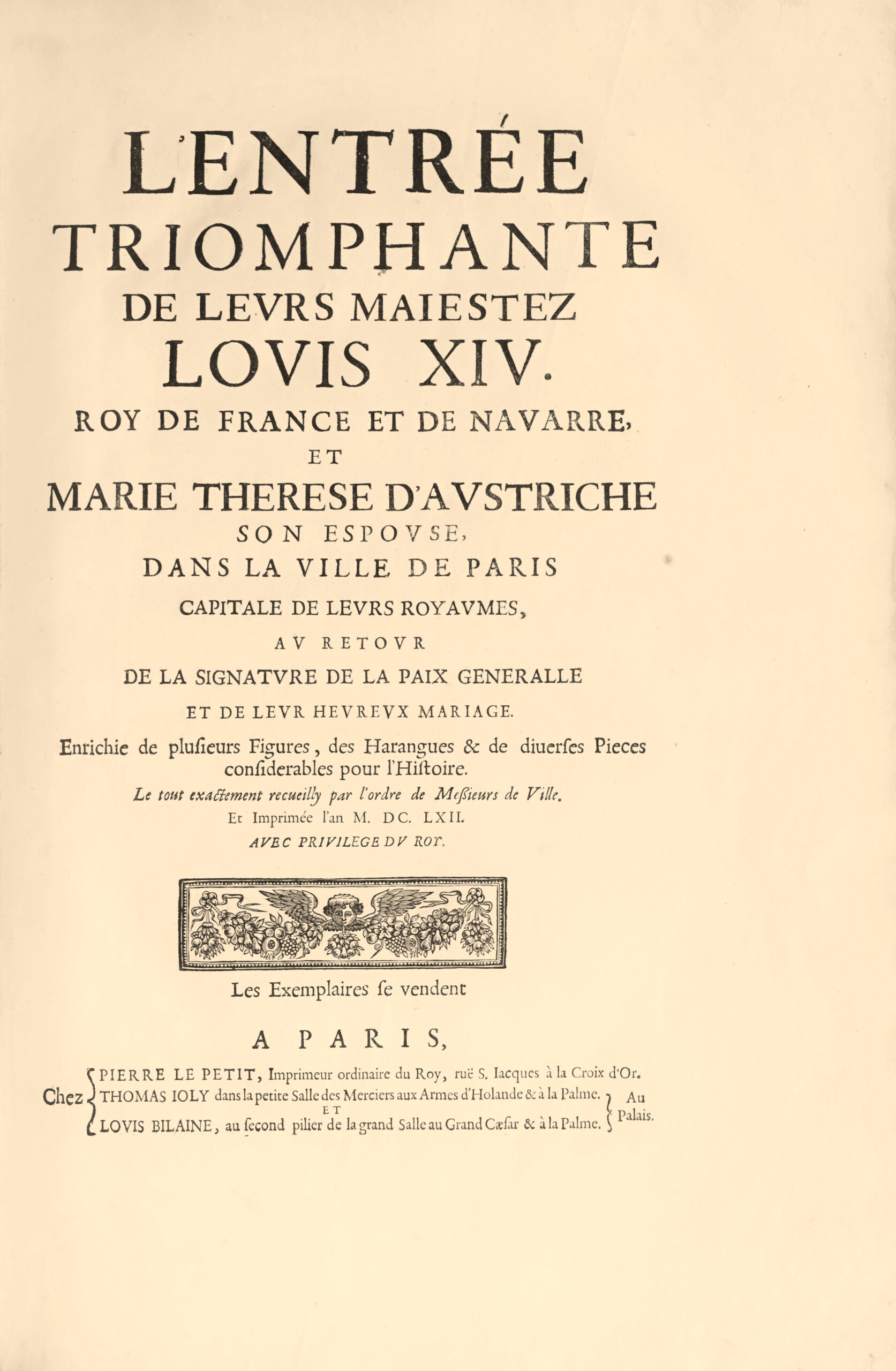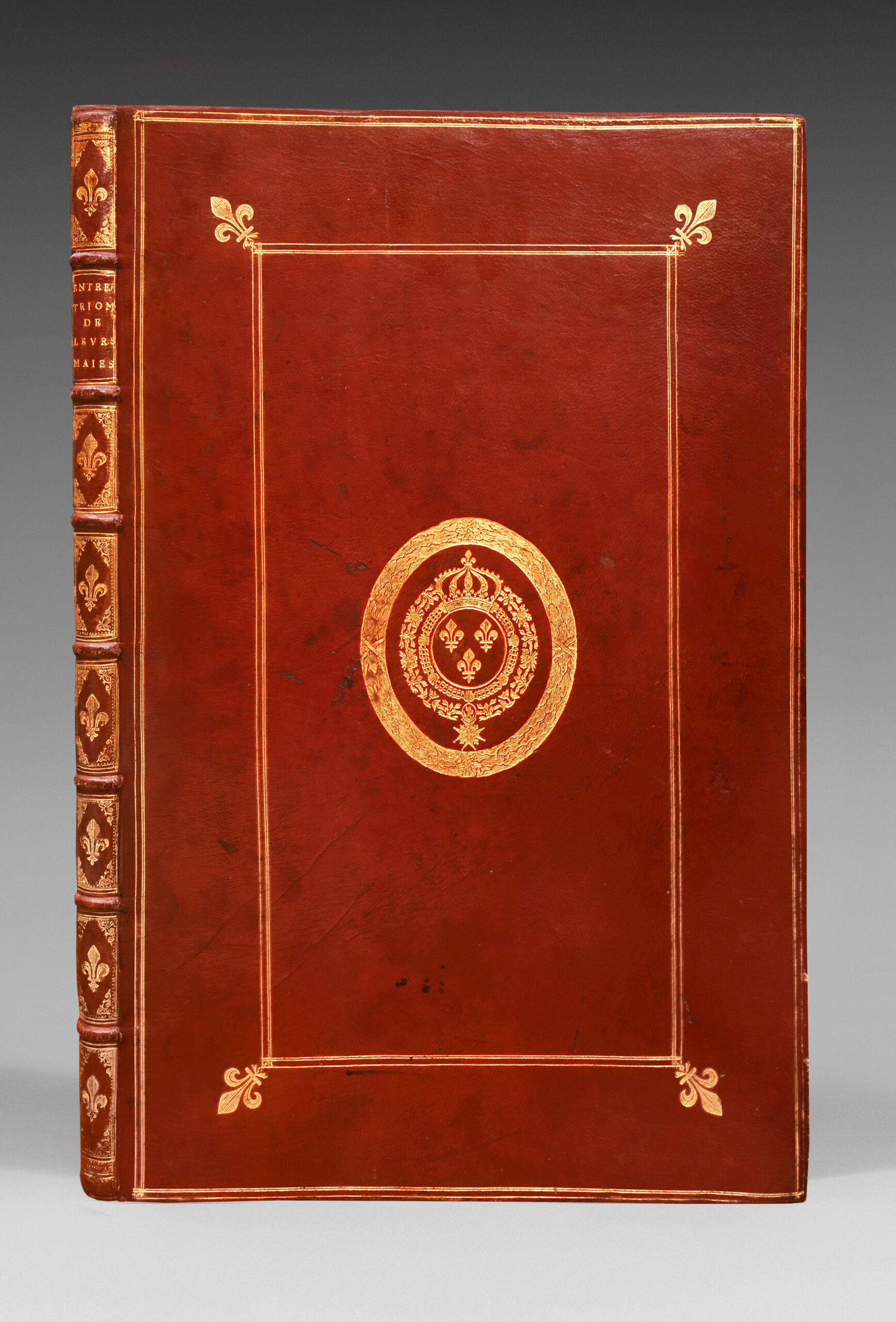Paris, Pierre Le Petit, Thomas Joly, Louis Bilaine, 1662.
Folio with 1 full-page engraved frontispiece, 1 title leaf, 1 portrait of King Louis XIV engraved after Mignard by Van Schuppen, 1 dedication leaf, (2) ll. of Advice to the reader, 7 pp., 34 pp., 28 pp., 12 pp., 14 double-page plates and 8 full-page plates engraved by J. Marot and Chauveau, after J. Le Pautre. Copy enriched with the portrait of Marie-Thérèse.
Full red morocco, double frame of triple gilt fillet with large gilt fleurs-de-lis in the corners “à la Duseuil”, large gilt royal coat of arms in the center, ribbed spine decorated with fleurs-de-lis, gilt edges. Bound in contemporary armorial morocco with fleurs de lys.
487 x 322 mm.
“The wedding of Louis XIV to Maria Theresa of Austria, daughter of Philip IV, King of Spain, was the crowning achievement of the Peace of the Pyrenees, signed in 1659. The young king fetched the young queen from the border and brought her back to Paris, where they made a solemn entry on August 26, 1660. The procession, the decorations, the triumphal arches, the fireworks, not to mention the harangues, gave such splendor to this solemnity that the Paris city council of that date, i.e. the Provost of Merchants and the aldermen, ordered that “the whole be collected and printed”. Hence the book we are reporting on, whose engravings, numbering 24 in the second edition, are the work of the leading engravers of the time: Chauveau, Jean Marot, Le Pautre, Cochin de Troyes, Flamen and Nicolas Poilly. The latter is distinguished by a very fine portrait of Louis XIV at the age of 20 or 22, after Mignard.
The frontispiece, beautifully engraved by Chauveau, shows the young king seated on his throne, to whom the Provost of the Merchants and the aldermen present, on their knees, the account of the Entrée triomphale.
This is followed by a dedicatory epistle to the reader, engraved and framed in fleurons; then we come to the 3rd plate, which depicts Leurs Majestés passant en revue (between the Bois de Vincennes and the city) la milice de Paris. The other plates show: l’Arc de triomphe à l’entrée du Faubourg Saint-Antoine (by J. Marot); – l’entrée du pont Dormant de la porte Saint-Antoine (Marot) ; — l’Arc de pierre sur le pont dormant de la porte Saint-Antoine (Marot) ; — la porte de la ville du côté de Saint‑Antoine ; — le Parnasse, Carrefour de la Fontaine Saint-Gervais ; — le pont Notre-Dame réparé et enrichi (Marot) ; — l’Arc de triomphe au bout du pont Notre-Dame du côté de la Cité ; — l’Arc de triomphe au Marché neuf (Marot) ; — le plan de la place Dauphine (Marot) ; — l’Amphithéâtre de la place Dauphine (Marot) ; — l’Obélisque (Lepautre ?) ; — la Façade de l’Hôtel de ville du côté de la place de Grêve (Marot) ; — le trône élevé sur le vaste emplacement nommé aujourd’hui place du Trône (Marot) ; — l’Hôtel de Beauvais, rue Saint Antoine, d’où la reine-mère vit passer le cortège (Marot). The next 5 plates, if numbered, would be nos. 18, 19, 20, 21 and 22; they are devoted to the procession, which takes place in the following order: the clergy, both secular and regular, the university, the city magistrates, Messrs. du Châtelet, de la cour des monnoyes, the court of aids, the members of the chambre des comptes, the members of the parlement, the crews of his eminence Cardinal Mazarin, the king’s stables, the chancellery, the royal household, the lords of the court, the officers of the crown, the king, the princes of the blood, princes and dukes, the queen and her retinue, the mounted bodyguards and the gendarmes who close the march.
The representation of this cortege offers the greatest interest from the point of view of customs, costume and history. The spiritual vivacity of the burin, the variety and accuracy of the attitudes are the characteristics of this remarkable work.
There is every reason to believe that these plates are the work of Cochin de Troyes, whose talent is very similar to that of Callot, the famous engraver from Lorraine.
The second-to-last plate relates to the Te Deum chanté à Notre-Dame. As an exception to an earlier custom, this Te Deum was not sung until the following day, i.e. August 27. In the choir, tapestries replace the beautiful woodwork seen there today. The last, again by Marot, depicts a 72-foot-long galley, the centrepiece of the fireworks display that took place opposite the Louvre on August 29″. (Ernest Vinet)
Precious presentation royal copy printed on large paper.
